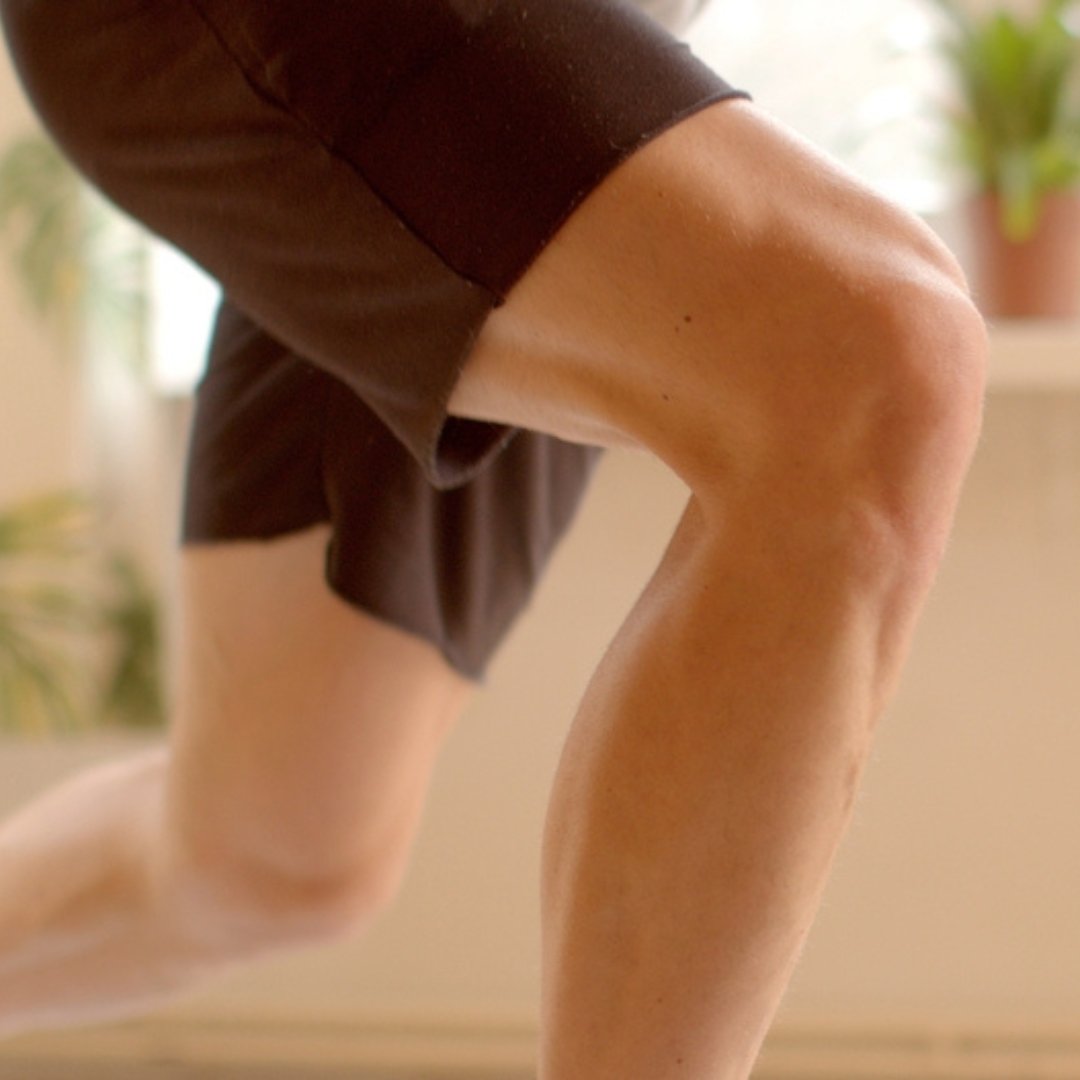
How Soon Should You Go Back to Driving After Knee Replacement Surgery?
Driving after knee replacement surgery? Learn when it’s safe to return to the road and how to manage stiffness, pedal control, and long-drive comfort.
Estimated 5-7 Minute Read
In Part 1 of our conversation, Eric—a physical therapy assistant with years of orthopedic rehab experience—shared what led him to finally undergo total knee replacement: a decade of pain, multiple surgeries, and a relentless focus on prehab. Now, in Part 2, we shift to the recovery.
This is the part most people aren’t prepared for.
From the hopeful high of day one to the setbacks, frustration, and hard-won progress of the first eight weeks, Eric opens up about what it really takes to get your life back after surgery—and why your mindset, pain management, and daily consistency matter just as much as the surgery itself.
Whether your operation is scheduled or still a “someday,” Eric’s story offers a real, honest perspective on what recovery feels like—and what you can do now to make it smoother later.
Eric’s surgery went as planned, and he returned home the same day—something that’s increasingly common with modern joint replacement procedures. Thanks to the anesthesia and a nerve block, he felt surprisingly good at first. With the help of a walker, he climbed the stairs, settled in, and even tested out his home recovery routine that evening.
“My leg moved better the day of surgery than it had in 15 years.”
— Eric Carter, PTA
For a brief moment, Eric thought he might be the exception—the one who breezes through recovery. But two days later, when the nerve block wore off, reality set in. The pain arrived. Swelling increased. Fatigue took over. And the optimism of Day 1 gave way to the uncomfortable truth: even with preparation, recovery is hard work.
What Eric experienced is incredibly common. The first 48–72 hours after knee replacement can feel confusing—many people assume that if the first day feels good, they’re on a fast track to healing. But the body needs time to adjust, and as sensation returns, so does inflammation, soreness, and stiffness.
That doesn’t mean something’s wrong. It just means recovery has officially begun.
The key is to shift expectations. It’s not about feeling great right away, it’s about staying consistent, managing discomfort wisely, and listening to what your body needs.
Despite being a physical therapist assistant with years of orthopedic experience, Eric described the first three weeks after surgery as brutal. Pain, swelling, fatigue, and even appetite loss became his new normal. Sleep was difficult. Movement felt foreign. And the recovery process—though expected—still caught him off guard.
What helped him through wasn’t pushing harder, but moving smarter.
Eric focused on consistent, manageable movement and staying ahead of his pain—something he knew was essential not just for comfort, but for function. When pain becomes overwhelming, the nervous system starts to guard against further movement, even if it’s safe. That can make regaining range of motion much harder.
“If your brain thinks an exercise will cause pain or damage, it shuts your movement down. That’s not weakness, it’s a built-in protection system.”
— Shehla Rooney, PT
Shehla explains that this neurological response is one of the biggest barriers to recovery and one that’s often ignored. The goal early on, isn’t just to stretch or strengthen, but to rebuild trust between your brain and your body. That trust lays the foundation for long-term mobility, strength, and confidence.
Eric found that having gentle, controlled movement he could do at home helped him re-engage with his knee in a safe, repeatable way, without triggering fear or guarding.
Healing isn’t just physical, it’s neurological. And in those first few weeks, your most important job isn’t forcing progress. It’s creating an environment where your body believes healing is possible.
Eric began outpatient physical therapy just two days after his knee replacement surgery, attending sessions three times a week. As a physical therapist assistant himself, he understood the importance of early movement and structured care. But even with his background, not every session went as expected.
One particularly aggressive treatment left him in more pain and set his progress back by several days.
“I knew better, but I still let it happen. I didn’t want to seem weak or difficult.”
This kind of experience is more common than people realize. Post-surgical rehab can sometimes focus more on reaching numbers, like degrees of flexion or extension, than on how the patient feels in the process. But when movement is paired with pain or fear, the brain often reacts by shutting things down. Muscles tighten. Motion stalls. Progress slows.
Shehla Rooney, PT, explains this as part of the neurological recovery that’s often overlooked.
“Your brain is trying to protect you. If it thinks movement will cause harm, it sends out signals to brace, freeze, or limit motion. That’s not weakness, it’s survival.”
What helped Eric was finding ways to move at home where he felt safe, in control, and unhurried. By adjusting the intensity and pacing himself, he was able to regain confidence in his knee and in his ability to move without triggering a stress response. Tools like the GoKnee device supported this process, not by pushing harder, but by allowing intentional, repeatable motion that helped his brain and body relearn trust in movement.
Effective recovery isn’t just about pushing harder. It’s about working smarter—by understanding the role your nervous system plays and honoring what your body is ready for.
Despite the rocky start, Eric made significant progress each week:
He still deals with occasional sleep disturbances and stiffness if he’s in one position too long—but compared to before surgery?
“My good days with my old knee are worse than my bad days with my new one.”
After years of helping others through recovery, Eric thought he had a pretty good idea of what to expect. But now, after living it himself, there’s one thing he says without hesitation:
“I would’ve had the surgery sooner.”
Like many people, Eric put it off—hoping the pain would pass, or that a better time would come. But instead, those extra years of discomfort did something more damaging than he expected: they rewired his nervous system. The longer he lived in pain, the more his brain began to see movement as a threat. By the time he reached the operating table, his nervous system was already on high alert.
This is something Shehla sees in patients all the time.
“Chronic pain doesn’t just live in your knee—it lives in your brain. The longer it sticks around, the harder it is to unlearn the fear that movement equals pain.”
— Shehla Rooney, PT
That’s why waiting for the “right time” can backfire. Yes, surgery is a big decision—but postponing it too long can make recovery more difficult than it needs to be.
Eric’s advice? Don’t wait until you’re desperate. Start preparing now. Even small changes—like walking more often, doing gentle prehab, or learning how to move without fear—can make a huge difference.
Because the truth is: recovery is harder when pain has had years to settle in.
But when you prepare your body and your brain ahead of time, you don’t just recover faster—you reclaim your confidence sooner.
Even with years of rehab experience, Eric still found traditional post-op exercises frustrating—especially early on when pain, swelling, and fatigue made simple movements feel overwhelming.
What helped was having something he could use at home, on his terms.
“It gave me control. I could go as far as I wanted without bracing for pain or second-guessing every movement.”
Eric used a combination of clinic-based therapy and GoKnee’s at-home recovery program to rebuild strength and mobility—but what made the biggest difference was consistency and trust: not just in his body, but in the tools he used.
As Shehla Rooney, PT, explains:
“The brain has to feel safe in order to let the knee move. That’s why how you move matters just as much as how often.”
After eight weeks on the other side of the surgery table, Eric has one core message: you have to show up for your own recovery. Not just in the therapy room, but at home, every single day.
Here’s what he wants you to know—whether your surgery is months away or already behind you:
It’s tempting to rest when you know a major procedure is coming, but Eric says that’s one of the biggest mistakes you can make. The stronger and more mobile you are going in, the more confident and capable your body will be coming out. Whether it’s walking, cycling, or doing chair exercises, gentle movement now will pay off later.
Pain can shut down your nervous system and block progress. Eric saw it firsthand with his own patients—and felt it himself after surgery. Staying ahead of the pain helped him stay ahead in recovery. “It’s not about avoiding meds,” he says. “It’s about making your brain feel safe enough to move.”
Going to PT two or three times a week is just a fraction of the picture. The real gains come from what you do outside the clinic. Eric committed to 20 minutes of exercise every morning and night. That consistency—on good days and bad—is what helped him regain strength and mobility quickly.
Chronic pain changes the way your brain relates to movement. “Even if the new knee is structurally sound,” Eric explains, “your nervous system might still be on high alert.” That’s why early, gentle motion and a sense of control are critical. When your brain believes it’s safe, your body will start to follow.
Eric used GoKnee alongside his clinic therapy—not to replace it, but to reinforce it. What mattered most wasn’t the device itself, but the freedom to progress at his own pace. “I knew when to stop, when to push, and when to try again. That made all the difference.”
One of the most overlooked truths about knee replacement? Recovery doesn’t begin the day you leave the hospital—it starts long before you’re wheeled into the operating room.
Shehla Rooney, PT, has spent over 26 years specializing in knees, helping thousands of people navigate the physical and emotional toll of chronic pain and surgery. Over time, she noticed a consistent pattern: patients who prepared before surgery—both physically and mentally—recovered faster, moved more confidently, and regained their independence sooner.
But traditional rehab often skips over this preparation phase entirely. Most programs wait until after surgery to begin working on range of motion and strength. And almost none address one of the biggest barriers to healing: the brain’s instinct to protect a painful or injured joint.
“If your brain believes movement will cause harm, it will shut the knee down. You can stretch and strengthen all you want, but if the nervous system is still in panic mode, progress stalls.”
— Shehla Rooney, PT
That’s why prehab—exercises and intentional movement done before surgery—is so important. It helps your muscles stay strong, your joints stay mobile, and most importantly, it begins to calm the nervous system. It gives your brain time to rebuild trust in your knee, setting the stage for smoother recovery after the procedure.
And no, it doesn’t have to be extreme. Prehab can be simple. Gentle strengthening. Targeted mobility. Repetition that reminds your brain and body: you can do this.
So if you’re waiting on a surgery date, don’t wait on your recovery.
Start now.
Move a little more today than you did yesterday.
Breathe through discomfort instead of avoiding it.
Begin building the foundation your future self will thank you for.
Because healing isn’t just physical—it’s neurological, emotional, and personal. And it begins before the first incision is ever made.

Driving after knee replacement surgery? Learn when it’s safe to return to the road and how to manage stiffness, pedal control, and long-drive comfort.

Protect your knee health with lifestyle tips, exercises, and therapies that help prevent degeneration and support long-term joint comfort.

Sex after knee replacement surgery is safe with the right timing, tips, and support. Learn how to return to intimacy with confidence.

Learn how neuromuscular training improves knee stability, balance, and proprioception to support joint health and prevent injuries.

Learn why knee stiffness isn’t only caused by aging and discover strategies to ease pain, improve mobility, and support long-term knee health.